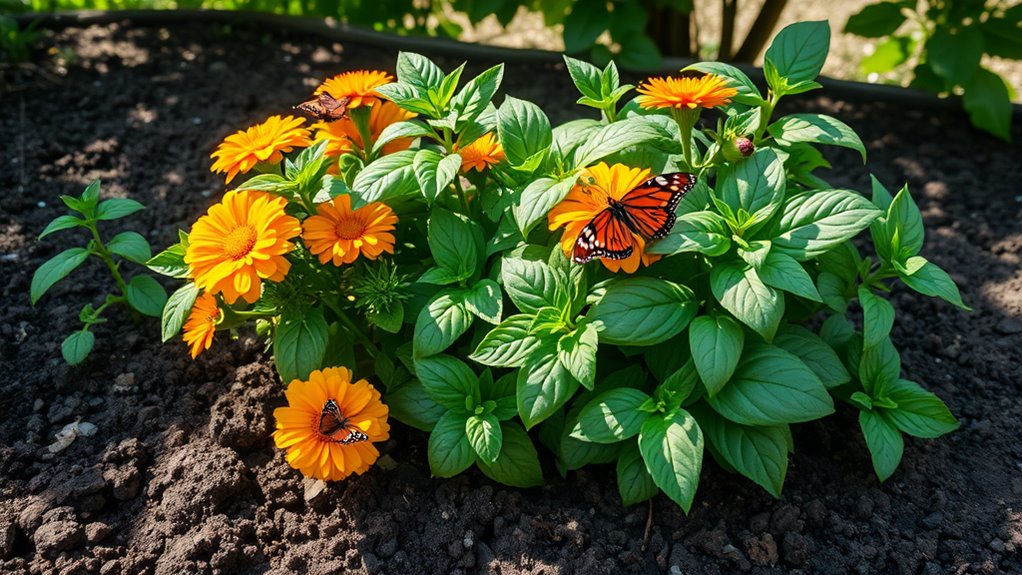The Companion Pairing That Fixed My Garden Naturally
You’ve probably heard that certain plants thrive better together. Imagine transforming your garden into a vibrant ecosystem with just a few strategic pairings. By planting tomatoes alongside basil, you not only enhance growth but also create a natural defense against pests. Curious about how this synergy can change your gardening game? Discover the unexpected benefits that await when you embrace companion planting for a bountiful harvest.
Understanding Companion Planting
When you delve into gardening, understanding companion planting can transform your green space into a thriving ecosystem. This technique leverages plant synergy, where certain plants work together to enhance growth and deter pests. By incorporating beneficial relationships, you can improve soil health and foster a more resilient garden environment.
The Benefits of Plant Synergy
Countless gardeners have discovered that plant synergy isn’t just a concept—it’s a proven way to boost your garden’s productivity.
When you combine compatible plants, you’ll enjoy:
- Improved pest resistance
- Enhanced nutrient absorption
- Greater yield and flavor
- Increased soil health
Embracing plant synergy means creating a harmonious ecosystem, allowing your garden to thrive naturally while reducing the need for synthetic interventions. Additionally, certain companion planting combinations can lead to effective pest control and healthier crops.
My Top Pairing: Tomatoes and Basil
One of the most captivating examples of plant synergy is the dynamic duo of tomatoes and basil.
These two thrive together, enhancing each other’s flavors and growth. Basil repels pests that normally target tomatoes, while tomatoes provide basil with essential shade.
When you plant them side by side, you’ll enjoy vibrant yields and a delightful aroma wafting through your garden—simply irresistible! Moreover, this companion planting strategy not only boosts flavor but also improves soil health, creating a sustainable gardening practice.
How Marigolds Boosted My Garden’s Health
As you wander through your garden, you might notice how marigolds not only brighten the landscape but also play a crucial role in enhancing your garden’s health.
They contribute by:
- Repelling harmful pests
- Attracting beneficial insects
- Enhancing soil quality
- Offering vibrant color for pollinators
Furthermore, marigolds are known for their ability to create a naturally resilient environment, allowing for better plant growth and crop yields. With marigolds, you’re nurturing a naturally resilient environment, making your gardening journey even more enjoyable.
Lessons From Nature: Observing Plant Interactions
Observing how different plants interact in your garden can reveal valuable lessons about nature’s intricate balance.
You’ll notice how companions like basil and tomatoes thrive together, one enhancing the other’s growth.
Pay attention to pest deterrents and nutrient share, too.
These interactions illustrate harmony, teaching you about biodiversity and the synergy essential for flourishing ecosystems.
Your garden becomes a vibrant, natural classroom. Additionally, understanding the concept of companion planting benefits can help you make more informed decisions about which plants to pair for optimal growth and pest control.
Sustainable Practices for Future Gardens
While you cultivate your garden, embracing sustainable practices ensures not just the health of your plants but also the vitality of the entire ecosystem.
Here are some methods to implement:
- Use organic fertilizers to enrich soil without chemicals.
- Implement crop rotation to avoid soil depletion.
- Encourage beneficial insects to manage pests naturally.
- Collect rainwater for irrigation, promoting conservation.
- Incorporate companion planting to enhance plant growth and deter pests.
Adopting these practices nurtures your garden sustainably.

